Four presidents oversee plenty of flags
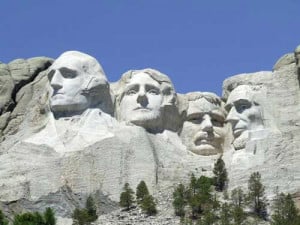
Seventy-five years ago, one of the world’s most astonishing man-made creations was dedicated: Mount Rushmore. Thirty-five years later, the four presidents carved there would look down on another tribute to the nation: the Avenue of Flags, colorful reminders of the country served by the stony quartet.
Mount Rushmore was conceived in the 1920s by Doane Robinson, state historian of South Dakota. He got in touch with sculptor Gutzon Borglum, and the massive undertaking was launched. Borglum said he kept in mind that “the purpose of the memorial is to communicate the founding, expansion, preservation, and unification of the United States with colossal statues.”
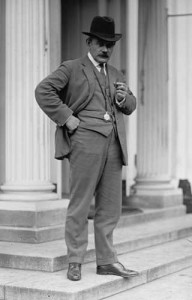
An original part of the mountain artwork never occurred. Ex-president Calvin Coolidge was invited to write a 500-word history of the United States that would be carved into Rushmore. However, the project was abandoned when Borglum began editing Coolidge’s text.
On the Fourth of July 1930, a peak at the peek’s progress was permitted as a huge American flag was lifted to reveal the progress on Washington’s image.
Over the course of 14 years, the mountain’s crags were turned into an artistic marvel, but the effort had to be cut short. In 1941, work on the tributes to Presidents George Washington, Thomas Jefferson, Theodore Roosevelt and Abraham Lincoln came to a premature end due to World War II, which was already raging in Europe and would soon engulf the U.S.
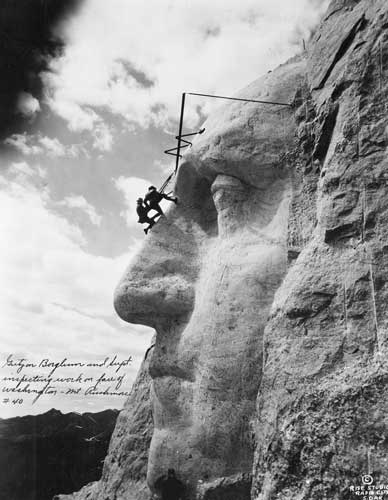
The unfinished look of the artwork reflects the unfinished nature of a nation that is always evolving. One part of that evolution occurred 40 years ago as part of the celebration of the Bicentennial of 1776. That’s when something important was added to the four images on Mount Rushmore: the Avenue of the Flags, which had been suggested by a park visitor.
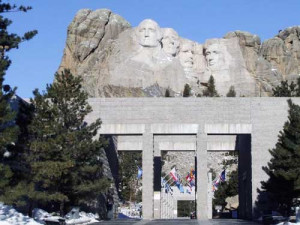
The NPS said that the display was adopted because “flags are powerful symbols [that] remind people of their common heritage, history and ideals.”
Tourists might expect to find only 50 flags on the avenue, one for each state, but there are six more than that. They include, the NPS notes, “one district, three territories and two commonwealths of the United States of America.” The fluttering flags fly in alphabetical order.
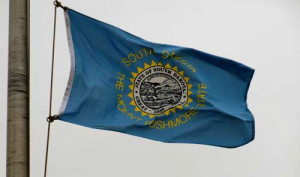
Of course, one of them is the South Dakota state flag, created in 1909 by Ida Anding McNeil, librarian of that state’s legislature. Her unusual design included different images on the two sides of the banner: sun on the front; the state seal on the back. More than half-a-century later, they were combined on the front, a change even its creator endorsed.
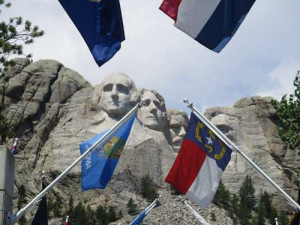 The main image on the flag is the seal of South Dakota, which salutes commerce, industry and natural resources. “Under God the People Rule,” which is the state’s motto, appears at the top. Within the seal are hills, a steamship and a river.
The main image on the flag is the seal of South Dakota, which salutes commerce, industry and natural resources. “Under God the People Rule,” which is the state’s motto, appears at the top. Within the seal are hills, a steamship and a river.
Vexillologists, who are experts in flags and who generally disdain facile use of state seals, consider South Dakota’s flag to be one of the worst in North America. If so, the state can still brag about waving in the winds of Mount Rushmore.
